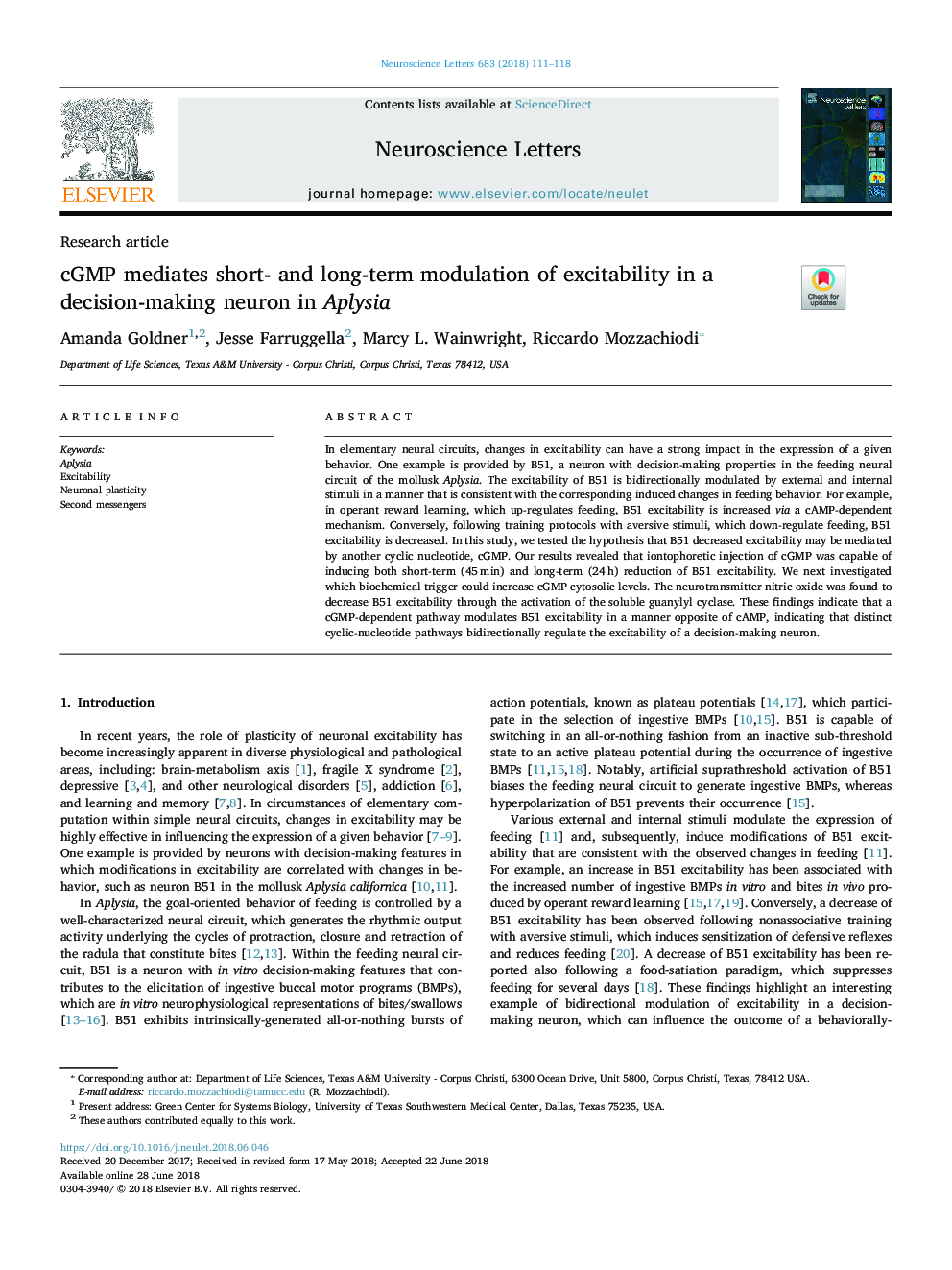| Article ID | Journal | Published Year | Pages | File Type |
|---|---|---|---|---|
| 8841375 | Neuroscience Letters | 2018 | 8 Pages |
Abstract
In elementary neural circuits, changes in excitability can have a strong impact in the expression of a given behavior. One example is provided by B51, a neuron with decision-making properties in the feeding neural circuit of the mollusk Aplysia. The excitability of B51 is bidirectionally modulated by external and internal stimuli in a manner that is consistent with the corresponding induced changes in feeding behavior. For example, in operant reward learning, which up-regulates feeding, B51 excitability is increased via a cAMP-dependent mechanism. Conversely, following training protocols with aversive stimuli, which down-regulate feeding, B51 excitability is decreased. In this study, we tested the hypothesis that B51 decreased excitability may be mediated by another cyclic nucleotide, cGMP. Our results revealed that iontophoretic injection of cGMP was capable of inducing both short-term (45â¯min) and long-term (24â¯h) reduction of B51 excitability. We next investigated which biochemical trigger could increase cGMP cytosolic levels. The neurotransmitter nitric oxide was found to decrease B51 excitability through the activation of the soluble guanylyl cyclase. These findings indicate that a cGMP-dependent pathway modulates B51 excitability in a manner opposite of cAMP, indicating that distinct cyclic-nucleotide pathways bidirectionally regulate the excitability of a decision-making neuron.
Related Topics
Life Sciences
Neuroscience
Neuroscience (General)
Authors
Amanda Goldner, Jesse Farruggella, Marcy L. Wainwright, Riccardo Mozzachiodi,
